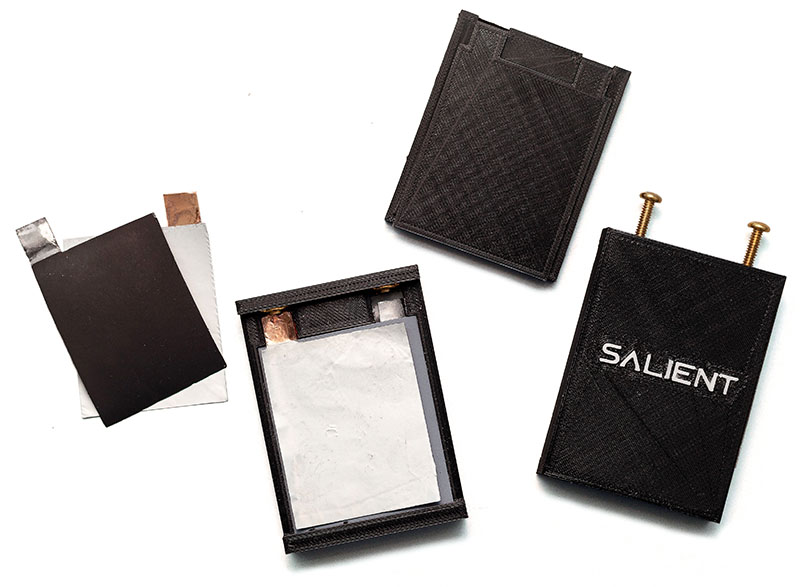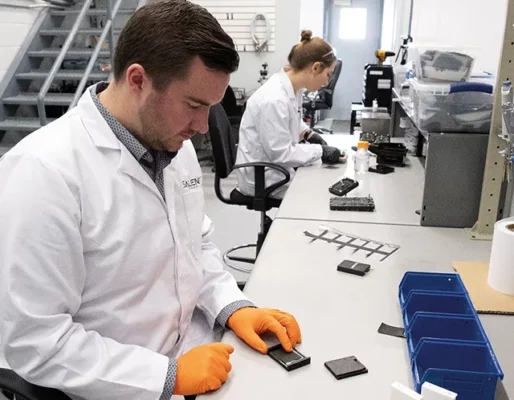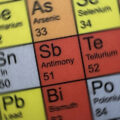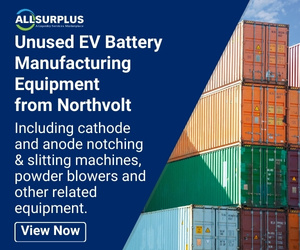Inherently safe, and using the same format as lithium-ion batteries, zinc-ion chemistry is contending for the title of number one battery chemistry. Ryan Brown, co-founder and CEO of Salient Energy makes the case for using zinc-ion batteries in stationary energy storage systems.

Lithium-ion dominates today’s stationary energy storage market, accounting for well over 90% of energy storage installed in the past decade. This is primarily due to its super lifetime cost over lead-acid batteries in applications that require frequent cycling. However, there is an increasing focus on new battery technologies that are better suited to the unique needs of stationary energy storage.
The simple fact is that addressing climate change will require a massively scaled grid that is powered nearly exclusively by renewables. This, in turn, requires deployment of stationary storage batteries at a rate that is thousands of times larger than the current industry can support.
While lithium-ion has helped bring this industry into existence, its dependence on scarce materials and its critical role in electric vehicles means there will almost certainly not be enough lithium-ion batteries available for the decarbonised future we need. The development of lithium-ion alternatives that can match or beat its performance, while using inexpensive and abundant materials, is thus critically important.
There have been many attempts to replace lithium-ion batteries, but few have succeeded. This is typically due to the solutions being too bulky to compete on cost, having a power capability too low to meet the grid’s need for intraday energy shifting, or challenges with scaling-up exotic designs. Fortunately, a new type of battery called the zinc-ion battery is emerging as a serious contender that does not suffer from any of these limitations.
The zinc‑ion battery is an intrinsically safe battery that can be used as a direct replacement for lithium-ion in most stationary storage applications. It uses raw materials that are orders of magnitude more abundant in a standard lithium-ion-like design. This ability to use a lithium-ion standard design means that the zinc-ion battery can use the same manufacturing equipment and processes that have driven so much of lithium‑ion’s cost reduction.
Zinc-ion’s role as a safe and scalable alternative to lithium‑ion makes it a strong contender for the energy storage industry’s battery of choice in the near future. This article will describe the zinc-ion battery in more detail, in addition to explaining the issues with lithium-ion that necessitate its development.
The rise and promise of zinc-ion batteries

Zinc batteries have been around for centuries, though almost exclusively as disposable, non-rechargeable batteries. Its inability to be recharged is due to the way in which the reactions in a zinc battery take place. Zinc batteries are typically conversion batteries, where each electrode reacts with the electrolyte to form a new molecule. These reactions typically require an electrolyte with a high pH, and the reactions that this alkaline electrolyte cause on the zinc anode limit rechargeability.
Lithium-ion batteries operate through a different paradigm, called intercalation. When an intercalation battery discharges, the anode pushes ions into the electrolyte while the cathode sucks up the same ions. Lithium intercalation was enabled by the discovery of materials that can reversibly absorb lithium ions at both electrodes— a set of discoveries that resulted in Nobel prizes for the scientists behind them.
There have been numerous attempts to find intercalation materials for a variety of other ions, including magnesium, sodium, potassium, and, of course, zinc. As a result of pioneering research in the 2010s, zinc intercalation batteries, called zinc-ion due to their similarity to lithium-ion, have been unusually successful.
Many zinc intercalation materials have been discovered. Importantly, the intercalation reaction for these materials has been compatible with a neutral pH electrolyte. The use of a neutral pH electrolyte enables zinc rechargeability in a way that the previously common alkaline electrolytes made nearly impossible.
The result of all this convoluted science is that highly rechargeable zinc batteries are now feasible. The materials developed for zinc are low-cost and possess the ability to quickly charge and discharge. Combined with the intrinsic safety of its water-based chemistry, it has the potential to be the low-cost, long-lasting, and safe alternative to lithium-ion the world has been waiting for. Its only distinct disadvantage is how much heavier it is than lithium-ion— an unavoidable consequence of using heavier elements. This increase in weight precludes it from use in electric vehicles, but it is otherwise suitable for stationary energy storage applications. While heavier, zinc-ion batteries are similar in size to most lithium-ion batteries.
While it is not the first battery to offer cost, safety, and service-life advantages over lithium-ion, it is the first to offer a comparable amount of energy per unit volume (energy density). The most mature lithium-ion alternatives are typically over 10x the size of lithium-ion. This has important implications for the scalability of such technologies as it precludes them from using lithium-ion manufacturing.
Lithium-ion batteries are built by depositing thin electrode coatings on thin metal substrates. This is done in a continuous roll-to-roll coating process with in-line drying. Batteries that cannot store a large amount of energy in a small amount of electrode material are unable to use this process economically, meaning they need to develop unique manufacturing processes. Lithium-ion manufacturing has experienced cost reductions of more than 80% in the past decade through improvements in manufacturing equipment. Competing with this cost curve has proven extremely difficult for many novel technologies.
Zinc-ion is unique in that it benefits from lithium-ion’s cost curve, instead of being threatened by it. Its high energy density means it can use the same lithium-ion electrode designs, making it compatible with low-cost manufacturing processes and equipment. This has enormous implications for how rapidly zinc-ion production can be scaled and the cost at which it can do so.
Lithium-ion safety concerns
One critical flaw of lithium-ion batteries is their lack of safety. Lithium-ion batteries regularly fail in spectacular ways, like the Samsung Galaxy Note explosions that lost the company billions of dollars. The typical energy storage system contains over a thousand times more battery capacity, making the results of safety failures catastrophic. In mission-critical operations, such as those for the power grid, this level of failure is simply unacceptable. This is especially true in applications where the battery is in a residential or commercial setting.
In mid-2019, this enhanced call for safety and re-evaluation of lithium-ion was brought to the forefront following the McKinnon conflagration from the utility, Arizona Public Service. The explosion and fire in a grid-battery near the state’s capital injured first responders, created a delay in the design and deployment of other storage across the state, and made the industry question the suitability of lithium-ion for large-scale energy storage systems.
The core of the problem is that lithium-ion batteries are fundamentally unsafe in their design. Lithium can react violently with the oxygen contained in the cathode, and the entire battery is soaked in a flammable electrolyte. Ensuring safety standards and guidelines are met when working with these volatile materials is critical to ensure the safety of the battery in the field. However, most lithium-ion batteries are manufactured overseas, predominantly in China. While new standards have been set by China, a lack of transparency into the supply chain can make it difficult to ensure all safety standards and guidelines are followed in the manufacturing process, creating substantial risk.
These concerns are completely alleviated in a water-based battery like zinc-ion. Fires are simply impossible. This makes them especially attractive for residential and commercial energy storage.
Material availability and supply chain risks
The lithium-ion industry is heavily dependent on the production and mining of scarce raw materials, like lithium and cobalt. Only a few countries produce these materials, and the processing of these mined materials into battery grade inputs is nearly monopolised by China.
This inability to produce the amount of lithium needed on a global scale is putting a crunch on the supply chain, and investments in mining and processing facilities simply have not kept pace with the rapidly growing demand for lithium-ion batteries. Industry analysts expect a shortage of lithium as early as 2024, which will necessarily hinder the world’s efforts to address climate change.
Apart from the impending shortage of lithium-ion materials, the concentration of supply chains in a few countries presents its own risks. The increasing adoption of batteries in critical electrical infrastructure complicates the United States’ dependence on China. If relations between China and the US worsen, as we saw happen throughout the past four years, America could lose its ability to source battery materials. Lithium-ion materials cannot be easily sourced in North America as it accounts for a negligible proportion of global production.
Zinc-ion batteries overcome this issue by using materials that are produced in far more abundance around the globe. In fact, zinc is so inexpensive and abundant that it is used to make pennies! The entirety of America’s anticipated energy storage demand could be met with North America’s current production of zinc-ion materials.












